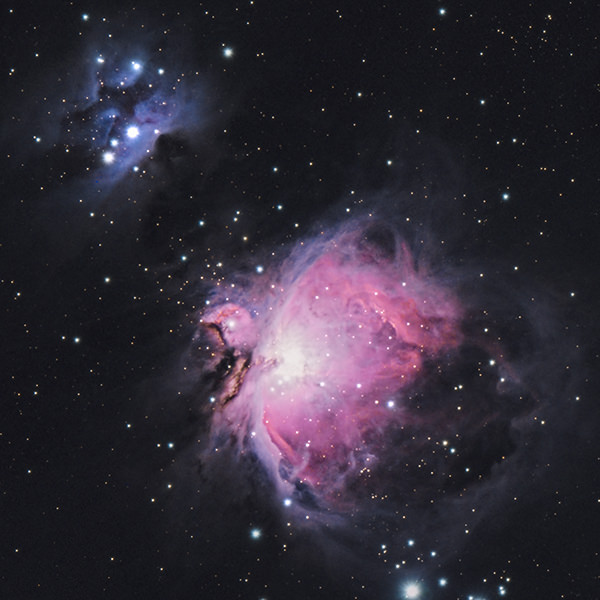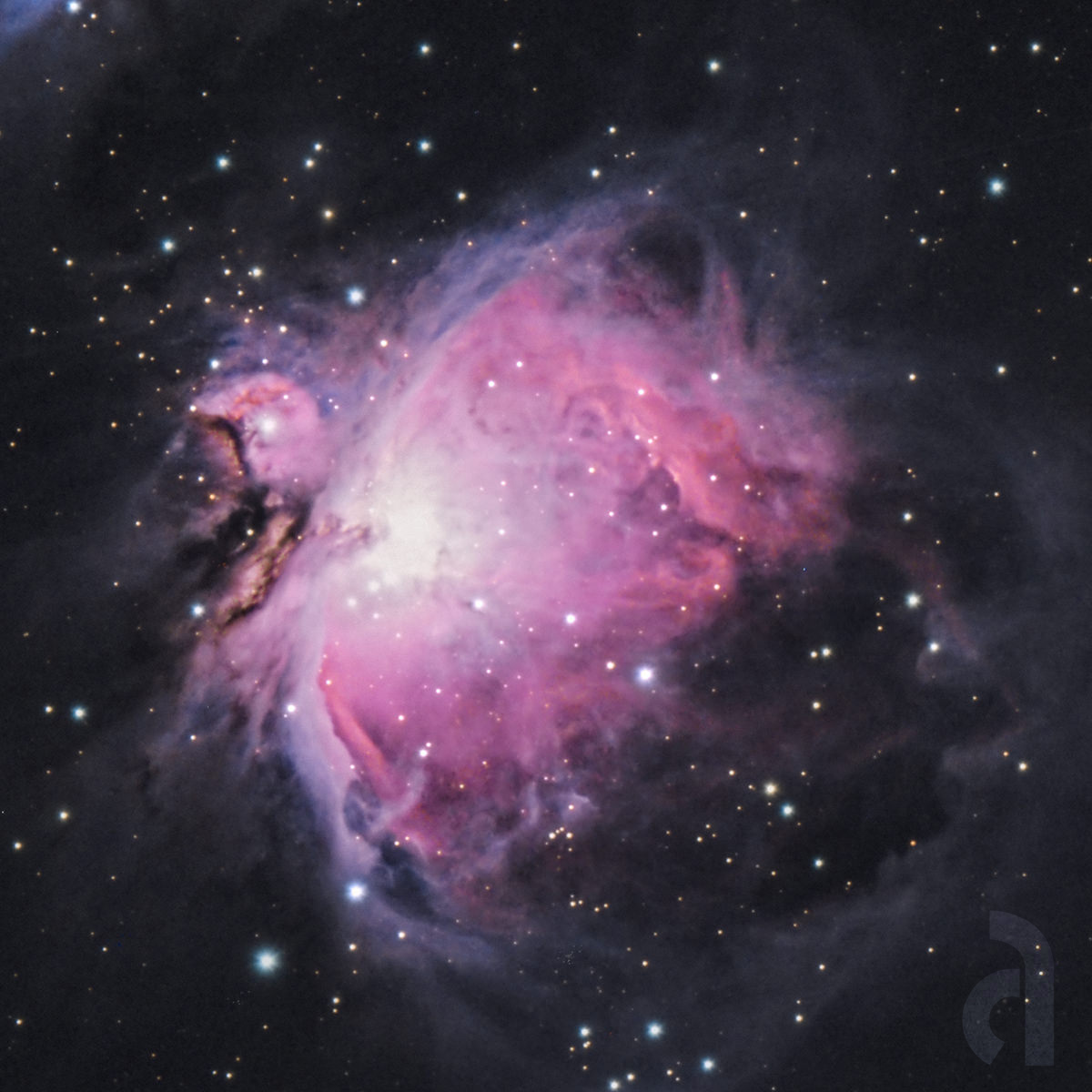The Orion Nebula
The Orion Nebula (M42) is one of the brightest nebulae, and can be seen using a telescope or just the naked eye. The ionized hydrogen gas cloud also contains what is known as the Trapezium, an open cluster of four bright stars.
Specifications:
Designation: M42
Known As: The Orion Nebula
Apparent Size: 1.5° x 1°
Magnitude (lower is brighter): 4.0
Distance from Earth: 1,300 LY
Orion in Full Color
The image above was taken in a Bortle 5 sky using a UV/IR cut filter. This allows all the visible light to come through. While the nebula is mainly hydrogen, there is enough reflected light from the Trapezium to illuminate the faint dust clouds.
EQUIPMENT
Telescope: Apertura 60EDR
Mount: Skywatcher EQ6R-Pro
Camera: ZWO ASI533MC Pro
Guiding: ZWO ASI120MM Mini
Brain: ZWO ASIair Pro
Filters: ZWO Duo-Band Filter
ACQUISITION
Integration Time: 30 min
RGB: 15 x 120sec
BIN: 1×1
Gain: 110
Temperature: -10° C
Bortle Scale: 5
CALIBRATION
Darks: 10
Offset/Bias: 30
The Orion Constellation
Orion (the hunter) is one of the most recognizable constellations in the night sky. It is located near the celestial equator so it is visible to most of the world. Orion also contains two of the brightest stars in the sky, Rigel and Betelgeuse.
The Orion Nebula can be found between the belt and the feet of the constellation. Near the bright star, Rigel, you can also find a faint reflection nebula called the Witch Head Nebula (IC2118).

The Orion &
Running Man Nebulae
Using the ASI 533MC Pro camera at a focal length of 367mm allows both the Orion Nebula (M42) and the Running Man Nebula (Sh2-279) to be in frame together.
Captured on 2/27/22.

Available Merchandise
Use the Order Form to request prints or merchandise. (I accept Venmo or CashApp.)
*General information regarding constellations, galaxies, nebulae, and planets have been sourced from: AstroBackyard, VisibleDark, Wikipedia, EarthSky, and NASA.

